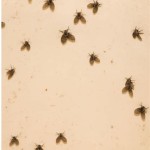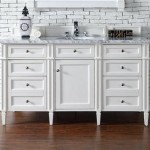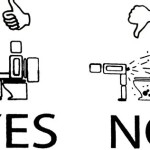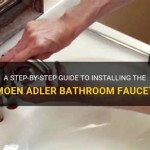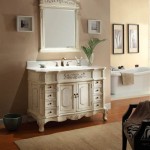How to Remove Stains from Bathroom Floor Tiles
Bathroom floor tiles are prone to staining, especially when exposed to water, soap scum, and other everyday grime. These stains can range from unsightly to deeply embedded, making the once-bright tiles look dull and unappealing. Fortunately, there are effective methods for removing these stains, restoring your bathroom floor to its former glory. This article will guide you through various stain removal techniques, offering practical steps and tips for tackling different types of stains.
Understanding the Cause of Stains
Before diving into stain removal, it's essential to understand what causes them. Common bathroom floor tile stains include:
- Soap Scum: A film that forms from the residue of soap and hard water, leaving a hazy, white residue.
- Hard Water Stains: Caused by minerals in hard water, leaving behind white or yellowish marks.
- Mold and Mildew: Typically found in damp areas, appearing as black, brown, or greenish spots.
- Rust: Often caused by metal objects like razors or hairspray cans, resulting in reddish-brown stains.
- Grout Discoloration: The grout between tiles can become discolored from dirt, mildew, and everyday wear and tear.
Knowing the source of the stain will help you choose the most appropriate cleaning solution.
Tackling Common Stains
Here are some effective methods for removing common bathroom floor tile stains:
Soap Scum and Hard Water Stains
For these stains, a vinegar-based solution is often the most effective:
- Mix: In a spray bottle, combine equal parts white vinegar and water.
- Apply: Spray the solution on the stained tiles, allowing it to sit for 10-15 minutes.
- Scrub: Use a non-abrasive scrub brush or a soft-bristled toothbrush to loosen the stain.
- Rinse: Thoroughly rinse the tiles with clean water.
- Repeat: If necessary, repeat the process until the stains are gone.
For stubborn stains, you can substitute the vinegar with a commercial tile cleaner designed to remove soap scum and hard water deposits.
Mold and Mildew
Mold and mildew thrive in damp environments, requiring a specific approach:
- Ventilation: Improve ventilation in your bathroom to prevent moisture buildup, which is a breeding ground for mold and mildew.
- Bleach Solution: Create a weak bleach solution by mixing one part bleach with three parts water.
- Apply: Apply the bleach solution directly to the affected areas using a spray bottle or a clean cloth.
- Scrub: Gently scrub the mildew with a non-abrasive brush.
- Rinse: Rinse the tiles thoroughly with clean water.
- Repeat: If necessary, repeat the process until the mildew is gone.
Always wear gloves and ensure proper ventilation when using bleach to avoid skin irritation and harmful fumes.
Rust Stains
Rust stains can be more challenging to remove, but these methods can be effective:
- Lemon Juice: Rub fresh lemon juice directly on the rust stain, allowing it to sit for a few minutes. The citric acid in lemon juice helps break down the rust.
- Baking Soda Paste: Create a paste by mixing baking soda with a little water. Apply the paste to the rust and let it sit for 15-20 minutes.
- Commercial Rust Remover: If the stains persist, try a commercial rust remover designed for tile surfaces. Follow the product instructions carefully.
- Scrub and Rinse: After applying the chosen method, scrub the stain with a non-abrasive brush and rinse thoroughly with clean water.
Grout Discoloration
For discolored grout, a dedicated grout cleaner is often the most effective:
- Choose the Right Cleaner: Select a grout cleaner specifically designed for cleaning and whitening grout.
- Apply: Apply the cleaner according to the product instructions, typically using a brush or applicator.
- Scrub: Gently scrub the discolored grout with a grout brush or an old toothbrush.
- Rinse: Rinse the grout thoroughly with clean water, removing any cleaning residue.
Preventive Measures
Prevention is key to keeping your bathroom floor tiles looking their best. Here are some tips for preventing stains in the first place:
- Regular Cleaning: Sweep or vacuum your bathroom floor regularly to remove loose dirt and debris that can lead to staining.
- Prompt Cleaning: Clean up spills and messes immediately, especially those containing food, beverages, or other potentially staining substances.
- Use a Shower Squeegee: After each shower, use a squeegee to remove excess water from the floor tiles, preventing water spots and mildew growth.
- Ventilate Your Bathroom: Use a fan or open a window to improve ventilation and prevent moisture buildup.
By following these cleaning and preventive measures, you can keep your bathroom floor tiles looking clean, bright, and stain-free, enhancing the aesthetics and hygiene of your bathroom.

3 Best Ways To Get Rid Of Hard Water Stains From Bathroom Tiles Kent

3 Ways To Remove Stains From Tiles Wikihow

How To Clean Tiles With Stubborn Stains Bathroom Hardone Forums

How To Remove Hard Water Stain From Tile And Grout

How To Remove Hard Water Stains From Tile And Grout Woodard

How To Keep Your Fridge Stain Free Check Out These Easy Tips Vooki In

How To Remove Hard Water Stains From Bathroom Floor Tiles

How To Remove Even The Toughest Stains From A Tile Floor

7 Most Powerful Ways To Clean Tiles Grout Naturally

How To Remove Even The Toughest Stains From A Tile Floor
Related Posts
